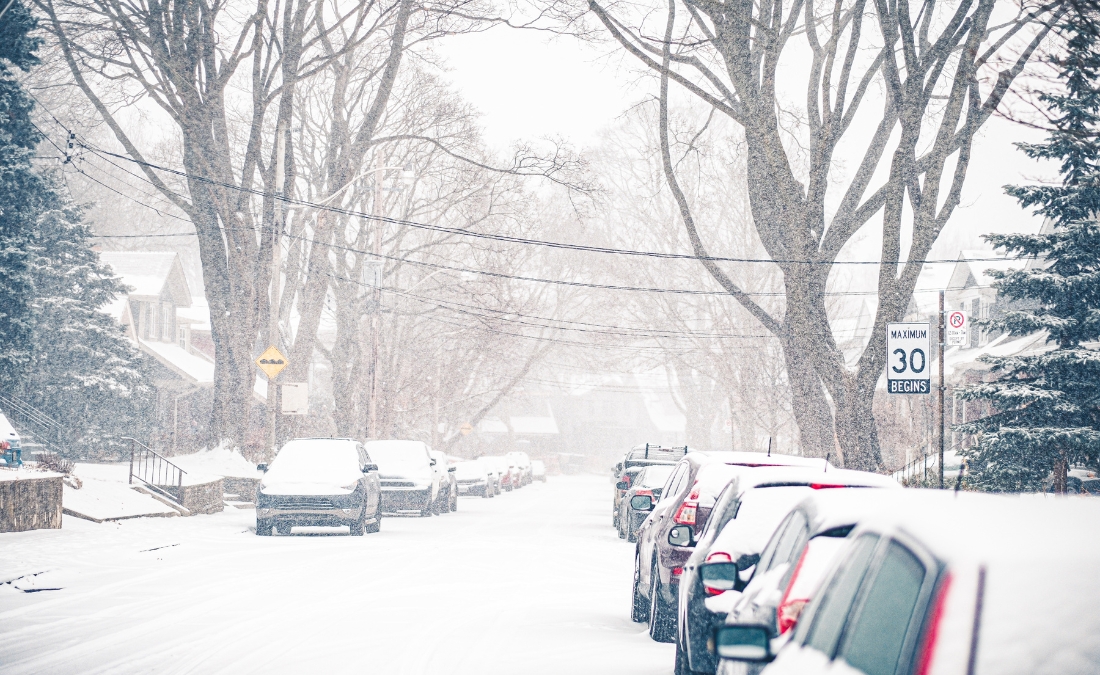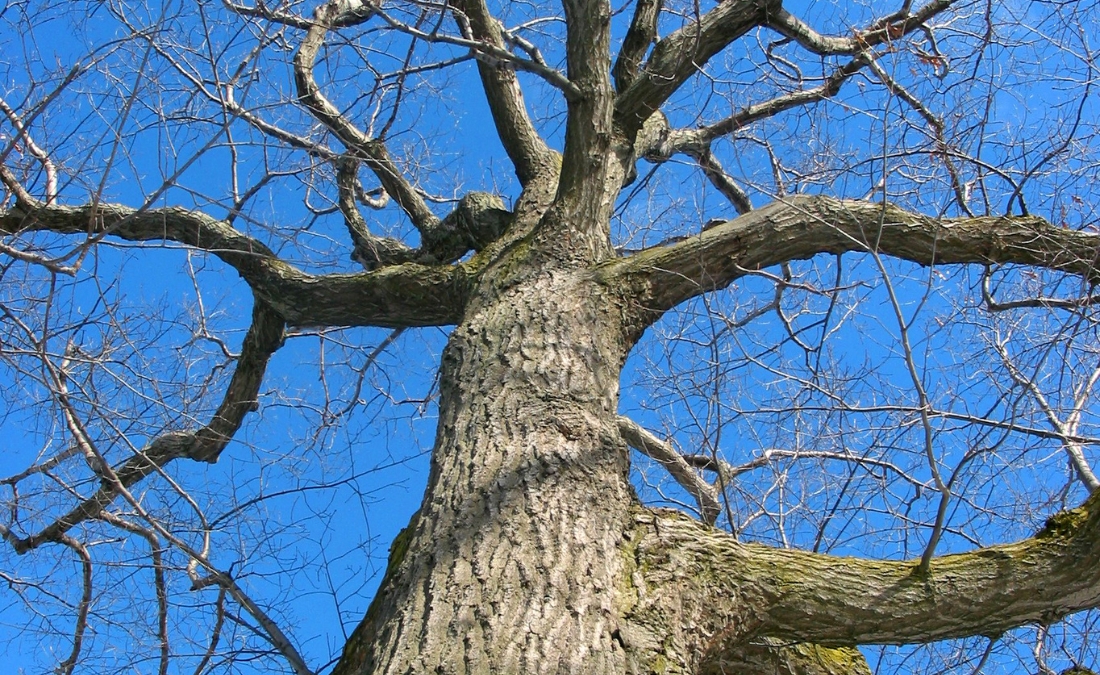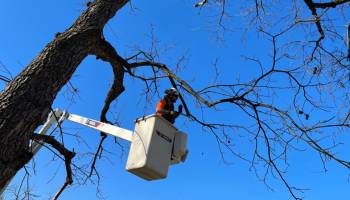How to Prune Storm-Damaged Trees in Wichita: Expert Recovery Techniques After Ice and Snow
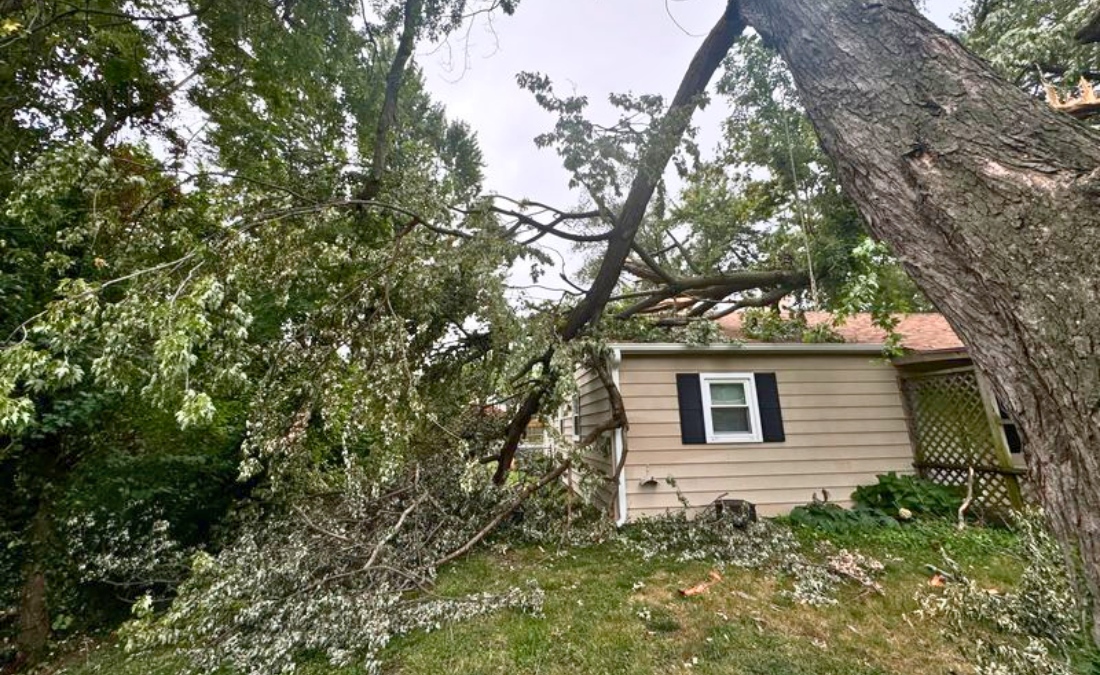
Has a recent storm left your Wichita trees sagging or split? Learn how Certified Arborists prune safely after ice and snow to help trees recover and thrive.
Winter storms in Wichita can transform beautiful trees into hazards overnight. Longtime residents know how unpredictable our winters can be – ice, heavy snow, and sudden temperature swings often combine to leave behind split limbs, fallen branches, and stressed trees. Proper pruning after these events is essential for safety and long-term health.
In established neighborhoods, like College Hill, with its century-old trees, and Vickridge, known for its expansive landscapes, winter storm damage presents unique challenges. These older trees often require specialized care to preserve both their structural integrity and the character they bring to Wichita’s most distinctive neighborhoods.
Key Takeaways
- Assess damage thoroughly before pruning, focusing on safety hazards first, especially in neighborhoods with mature trees.
- Use the three-cut method for branches over 2 inches to prevent bark tearing and protect the critical branch collar.
- Never “top” trees after storm damage, as this practice leads to weak regrowth and significantly shortens a tree’s lifespan.
- Small broken branches (under 2 inches) can be pruned by homeowners, but larger limbs or structural damage require professional arborists.
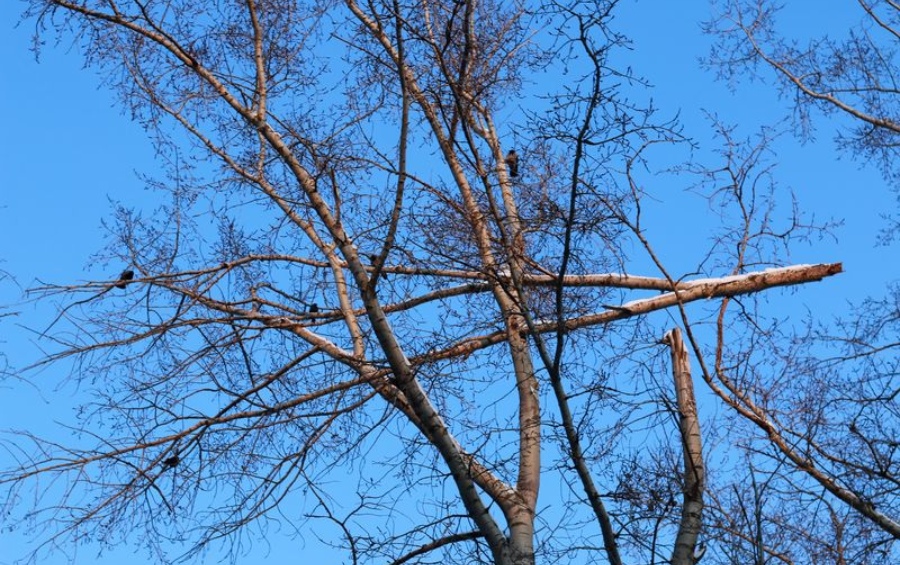
Winter storms can cause clean breaks in branches that require proper pruning techniques to promote healing and prevent further damage.
How to Assess and Address Winter Storm Damage in Wichita Trees
Before pruning, it’s important to understand the type and extent of the damage. Ice and snow affect trees in different ways, and each situation calls for a specific pruning approach.
In established neighborhoods, like Woodlawn Village, where 30- to 60-year-old trees dominate the landscape, ice storms often cause large limb failures or cracked branches. The good news is that many of these trees can recover with the right care.
| Damage Type | Description | Pruning Approach |
|---|---|---|
| Broken branches | Clean breaks where branches snapped under weight | Clean cuts at the branch collar |
| Split limbs | Partial breaks with wood fibers still connected | Evaluation for repair or removal |
| Bent branches | Young branches bent but not broken | Selective thinning to reduce weight |
| Crown damage | Multiple breaks throughout canopy | Prioritized pruning based on safety |
| Leader damage | Break of central main stem | Professional arborist assessment |
The Right Way to Safely Prune Storm-Damaged Trees
Kansas State University Extension research shows that correctly pruned trees can recover from significant storm damage. Conversely, improper cuts lead to decay and failure.
Before any pruning begins, safety must come first. Storm-damaged trees can be unpredictable, with hidden cracks, hanging limbs, or downed power lines that make conditions dangerous even for experienced homeowners. Taking the right precautions protects both you and your trees, including:
- Checking for downed power lines and stay at least 50 feet away.
- Wearing safety equipment, including a hard hat, eye protection, and gloves.
- Never working alone when assessing or pruning storm damage.
- Being cautious of “widow-makers” – branches broken but still hanging.
- Avoiding assessment during high winds or on slippery ground.
“After winter storms, we see many Wichita homeowners attempt to prune large, damaged limbs themselves, often leading to further tree damage or personal injury. When in doubt, consult a Certified Arborist.” – Seth Blank, Arbor Advisor at Arbor Masters
The Three-Cut Method for Large Branches
For branches larger than 2 inches in diameter:
- First Cut: Make an undercut 12-18 inches from the branch union, cutting upward about 1/3 through the branch.
- Second Cut: 2-3 inches further out, cut downward completely through the branch.
- Final Cut: Make the final cut just outside the branch collar.
This method prevents the heavy branch from tearing bark as it falls, which would create a much larger wound susceptible to disease.
Protecting the Branch Collar
The branch collar is crucial for wound closure. This slightly swollen area contains specialized cells that form a callus over the pruning wound. Proper cuts should be:
- Made just outside the branch collar, never flush with the trunk
- Clean and smooth using sharp, sanitized tools
- At a slight angle to shed water
- Careful to preserve the branch bark ridge (the raised area on the upper side of the branch union)
What NOT To Do When Pruning Storm-Damaged Trees
Avoid these harmful practices after storm damage:
- Topping: Never cut all branches back to the same height. This destroys the tree’s natural form, stimulates weak regrowth, and significantly shortens the tree’s lifespan.
- Flush Cutting: Never remove the branch collar, as this prevents proper healing.
- Leaving Stubs: Don’t cut too far from the branch collar. Stubs can’t heal properly and invite decay.
- Using Wound Dressings: These often trap moisture and slow healing rather than helping.
- Removing Too Much: Never remove more than 25% of the canopy, even after storm damage.
In neighborhoods like Woodlawn Village, where midcentury homes are complemented by mature trees, we’ve seen many examples of trees unnecessarily lost to improper pruning practices after winter storms. Ranch-style homes with more accessible trees make assessment easier, but can also lead homeowners to attempt work better left to professionals.
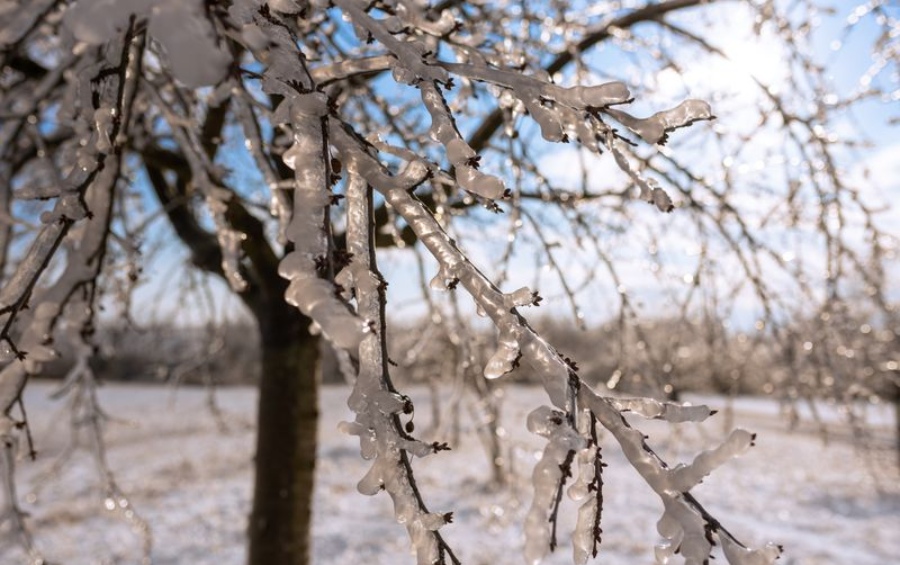
Ice accumulation can add hundreds of pounds of weight to tree branches, causing structural damage that requires careful assessment and proper pruning.
How to Prepare for Future Storms
Proper storm damage recovery should include preparation for future weather events, including:
- Preventive Pruning: Removing dead, diseased, or structurally weak branches before storm season can prevent future damage. Learn about tree pruning in different seasons to maximize benefits. This is particularly valuable in Woodlawn Village, where the diverse species selection in mid-century neighborhoods requires species-specific approaches.
- Structural Assessment: Professional evaluation can identify trees that might benefit from cabling and bracing for mature trees with structural weaknesses. This is often a common need in neighborhoods with complex, older tree canopies.
- Proper Species Selection: When replacing severely damaged trees beyond saving, choose species with good branch attachment and ice resistance suited to Wichita’s climate. This forward-thinking approach ensures the next generation of trees in all neighborhoods will be more resilient to our challenging winter conditions.
Frequently Asked Questions About Storm Damage Pruning
What care do trees need after storm damage pruning?
Damaged trees need special attention to recover. Some things we recommend include:
- Deep watering (soaking 12-18 inches deep) helps stressed roots recover during Wichita’s dry periods
- Applying 2-4 inches of organic mulch in a wide circle around the tree (never touching the trunk) to conserve moisture
- Monitoring closely for signs of stress, disease, or pest issues in the months following damage, as trees recovering from storm damage are more susceptible to secondary problems
Should I use a wound dressing after pruning storm-damaged branches?
Research from Kansas State University shows wound dressings do not accelerate healing and may actually slow the natural process by trapping moisture and creating favorable conditions for decay.
The exception is oak trees pruned between April and October in Wichita, which should have wounds sealed with appropriate materials to prevent oak wilt disease.
How does ice damage differ from wind damage in treatment approach?
Ice damage typically causes vertical splitting and clean breaks due to weight, while wind damage tends to cause twisting failures and torn bark. Ice-damaged branches often need complete removal at the branch collar, while some wind-damaged limbs with minor tearing might be saved with proper repair cuts.
What are the signs that a recovering tree needs professional follow-up care?
Watch for delayed symptoms that may appear months after initial pruning. This includes:
- Unusual leaf size or color
- Premature fall color
- Leaf wilting during normal weather conditions
- New cracks appearing in main branches or trunk
- Fungal growths (mushrooms) near the trunk base or on main branches
- Excessive dead twigs beyond the damaged area
- Insect activity concentrated in previously damaged areas

Our ISA Certified Arborists use professional equipment and follow proper safety protocols when pruning storm-damaged trees to ensure both worker safety and tree health
Turn Storm Damage into Recovery with Expert Tree Care from Arbor Masters
While minor damage can sometimes be addressed by homeowners, ice and snow damage often requires professional assessment. Be aware of hidden risks in storm-damaged trees that aren’t immediately visible from the ground.
At Arbor Masters, our professional pruning services in Wichita are tailored to address storm damage while promoting long-term recovery. For expert assessment of winter storm damage, contact us at 316-838-3111 or request an estimate online.

Get the latest local news, tree care tips, special offers, and company updates directly to your inbox! It's easy to subscribe and there's no spam - we promise.
"*" indicates required fields

